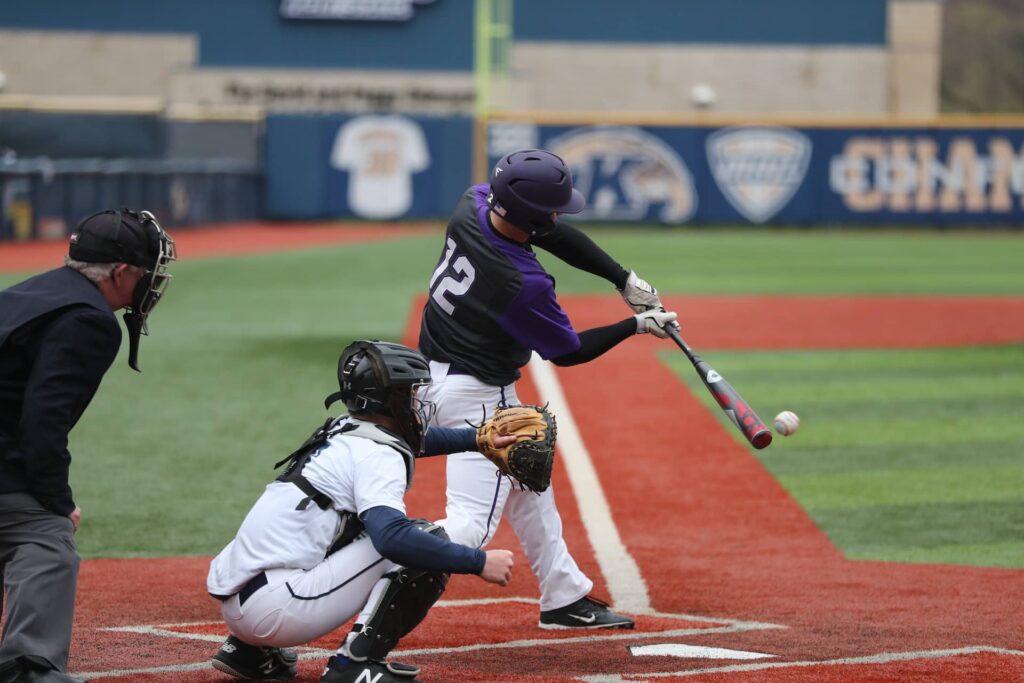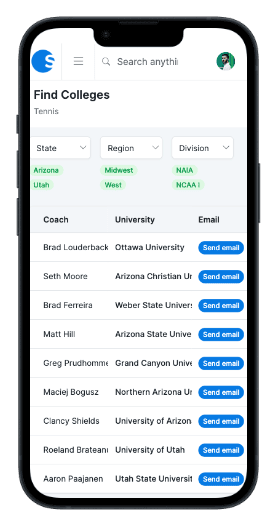Baseball Scholarships Info
Welcome to our comprehensive guide on Baseball Scholarship Info! If you’re a talented baseball player with dreams of pursuing higher education while showcasing your skills on the diamond, you’ve come to the right place. In this article, we will explore everything you need to know about baseball scholarships, including eligibility criteria, application tips, and the various opportunities available to help you secure financial aid for your academic and athletic journey. Whether you’re a high school standout or a seasoned player looking to take your game to the next level, we’ve got you covered with essential information to kickstart your path towards earning a baseball scholarship. Let’s dive in!

- How Baseball Scholarships Work?
- NCAA D1 Baseball Scholarships
- NCAA D2 Baseball Scholarships
- NCAA D3 Baseball Scholarships
- NAIA Baseball Scholarships
- Junior College Baseball Scholarships
- Is it possible to receive a full-ride scholarship for baseball?
- How long does a baseball scholarship last?
- What constitutes a good offer for a baseball scholarship?
- How does your position affect your scholarship?
- Chances of getting a baseball scholarship?
- Baseball scholarship offer – negotiation tips?
How Baseball Scholarships Work?
There are approximately 1,650 college baseball programs in the United States, including NCAA schools, NAIA schools, and junior colleges, which collectively house around 34,500 college baseball players. The competition for the limited number of scholarships, which amount to approximately 5,400, is intense. Baseball is classified as an equivalency sport, which means that scholarships can be divided among several players. Full-ride scholarships for baseball players are uncommon, and in this article, we will provide further insights into baseball scholarships.
| Division | Number of Teams | Total Athletes | Average Team Size | Scholarships per team |
| D1 | 298 | 10,400 | 35 | 11.7 |
| D2 | 259 | 9,000 | 39 | 9 |
| D3 | 374 | 11,200 | 34 | N/A |
| NAIA | 212 | 6,300 | 38 | 12 |
| JUCO | 515 | 15,300 | 30 | 24 |
Effective August 1, 2020, the NCAA D1 Council passed legislation that relaxed the regulations for need-based and academic scholarships that are not based on athletic ability. Under this new rule, baseball teams will no longer have their athletes’ need- and academic-based aid counted against the maximum athletic scholarship limit. Previously, additional aid was subject to certain criteria in order to not be counted against the team’s athletic scholarship limit.
Although baseball teams will still be subject to a maximum athletic scholarship cap, student-athletes can now seek and receive as much need-based and academic scholarship aid as they are qualified for. With school and family budgets being impacted by the coronavirus, this rule change should enable baseball programs with the funds to extend more money to families and athletes in need, especially at pricier private colleges.
It is important to note that Ivy League and Patriot League programs, as well as Division 3 schools, do not offer any athletic scholarships. Additionally, while scholarship limits per team are the maximum number of scholarships a school can award, coaches are free to divide them among players on the team. However, this does not necessarily indicate how many scholarships a team will have, as not all teams are fully-funded and may receive less than the allotted number of scholarships allowed at their level.
NCAA D1 Baseball Scholarships
- Total baseball programs: 298
- Maximum scholarships available per program: 11.7
Typically, Division 1 baseball programs begin recruiting earlier than those at other division levels. Verbal offers and commitments may be made by the time an athlete reaches their sophomore year of high school.
In accordance with NCAA regulations, a Division 1 baseball team’s 11.7 scholarships can be allocated to a maximum of 27 players on a 35-player roster. All players on athletic scholarship must receive a minimum of a 25 percent scholarship, which leaves room for eight walk-ons. Although initially not offered athletic scholarships, walk-ons have the potential to earn one in the future. Academically, athletes must complete at least 10 of their 16 core courses before their senior year in high school. These courses should include:
- Four years of English
- Three years of math (Algebra 1 or higher)
- Two years of natural/physical science
- One additional year of English, math, or natural/physical science
- Two years of social science, and four additional years of English, math, natural/physical science, social science, foreign language, comparative religion, or philosophy.
In order to meet eligibility requirements for playing at the Division 1 or Division 2 level, athletes must have a minimum GPA of 2.3 on a 4.0 scale. The required ACT or SAT score will vary depending on the sliding scale, with higher GPAs allowing for lower test scores. Athletes must register with the NCAA Eligibility Center, which is recommended to be done after their sophomore year of high school. As for local AAU baseball tryouts, the location and schedule for these events may vary and would require further research to obtain.
NCAA D2 Baseball Scholarships
- Total baseball programs: 259
- Maximum scholarships available: 9
In some cases, athletes with the talent to play for a Division 1 baseball program may opt for Division 2 instead, as it can offer them earlier playing opportunities. Other athletes may choose to move down a division level in order to be eligible for more athletic scholarship money. However, it is important to note that the most effective way to increase scholarship offers is to excel as a top-performing player in one’s division. Division 2 teams generally start scouting potential players early and may extend verbal offers before the early signing period, which falls in a student-athlete’s senior year.
To be eligible to compete at the Division 2 level, athletes must fulfill the following core course requirements, which are similar to those of the Division 1 level:
- Three years of English and math
- Two years of natural/physical science
- Two years of social science
- Two additional years of English, math, or science
- Four years of a foreign language, philosophy, religion, or additional years of any of the above categories
Division 2 institutions also apply a sliding scale to determine the necessary test scores for athletes based on their core course GPA.
NCAA D3 Baseball Scholarships
- Total baseball programs: 374
- Maximum scholarships available: 0
Division 3 schools don’t provide athletic scholarships, but they may offer appealing financial aid packages that are comparable to athletic scholarships at other levels. Division 3 programs often have limited recruiting budgets, so they depend on student-athletes to initiate contact and submit video footage for evaluation.
While there are no NCAA academic requirements for Division 3, each university establishes its own standards. Nonetheless, many Division 3 institutions have rigorous academic requirements, so athletes should research the admissions standards of their preferred schools to ensure they qualify.
NAIA Baseball Scholarships
- Total baseball programs: 212
- Maximum scholarships available: 12
Although athletic scholarships at the NAIA level are often divided among several players on the roster, elite athletes may opt to play at this level to receive a more comprehensive athletic scholarship. In terms of academics, athletes need to fulfill at least two of the following three requirements:
- Finish in the top half of their graduating class
- Have a minimum 2.0 GPA (on a 4.0 scale)
- Achieve a score of 850 on the SAT or 16 on the ACT.
Students must register with the NAIA Eligibility Center to be eligible to compete at the NAIA level.
Junior College Baseball Scholarships
- Total baseball programs: 511
- Maximum scholarships available: 24
Junior college baseball programs aim to provide players with a two-year (sometimes one-year) period for athletic and academic growth. The primary objective for most athletes is to find a suitable fit with a four-year program after completing their junior college tenure. Junior college baseball programs have a reputation for producing top-level talent, and they often place their players in competitive NCAA Division 1 and Division 2 programs.
This statement describes the academic eligibility requirements for recruits at the junior college level. Recruits must have either a high school diploma or a state-authorized GED. If they have not graduated high school, they must pass 12 college credits with a minimum GPA of 1.75 to be eligible to play.
College Finder Tool
Send your video to any college coach in the country.

Is it possible to receive a full-ride scholarship for baseball?
Obtaining a full-ride scholarship for baseball is uncommon. As previously mentioned, baseball teams have a finite number of scholarships available to the entire team. At the Division 1 level, this number is limited to 11.7. Coaches generally allocate partial scholarships among their players. Moreover, the player’s position on the team can be a determining factor. Typically, pitchers, catchers, and the most outstanding hitters receive the majority of the program’s scholarship funds.
How long does a baseball scholarship last?
Typically, baseball athletes sign a one-year scholarship agreement with their program, ensuring their athletic scholarship for that year. To maintain their scholarship for the following years, athletes will need to renew it. While multi-year scholarship agreements are permitted, they are not commonly utilized in baseball programs.
What constitutes a good offer for a baseball scholarship?
Determining what is considered a “good” baseball scholarship offer can be challenging since coaches have the authority to allocate scholarships among their rosters. The cost of tuition also varies, with public colleges averaging around $10,000 for in-state students and private colleges costing about $35,000. Thus, a 50% scholarship offer from a state school would equate to $5,000, whereas the same offer from a private institution would amount to approximately $17,500.
However, if an offer covers 100% of tuition, it does not include expenses like housing, books, and fees. It is advisable to have a clear understanding of the family’s financial situation before entering the recruiting process, allowing them to assess scholarship offers based on their financial capabilities.
How does your position affect your scholarship?
In baseball recruiting, priority positions are usually given to pitchers, catchers, shortstops, and center fielders, as coaches tend to build their team around these key positions. Although other positions may also receive scholarships, it ultimately depends on the specific needs of the coach’s roster.
Chances of getting a baseball scholarship?
Competing in college baseball is highly competitive, with only a small percentage of high school players making it to the college level. During the 2016-2017 academic year, there were approximately 492,000 high school baseball players in the United States, while there were just over 52,000 college baseball players. This indicates that only about 9 percent of high school players went on to play college baseball, and less than 2 percent of them competed at the NCAA Division 1 level.
Baseball scholarship offer – negotiation tips?
When it comes to discussing baseball scholarships, there is a proper etiquette to follow. It’s not advisable to directly mention scholarship in an introductory email to a coach. The appropriate time to talk about scholarships is during a face-to-face meeting with the coach on an official or unofficial visit.
A recruit can have a stronger negotiation position if they have offers from other schools. As college baseball is highly competitive, coaches are reluctant to lose promising recruits to other programs. Instead of demanding a specific number for a scholarship offer, it may be more effective to suggest a number and ask if there is a possibility to work with it in the future. To learn more about negotiating scholarship offers, click here.
College Finder Tool
Send your video to any college coach in the country.
